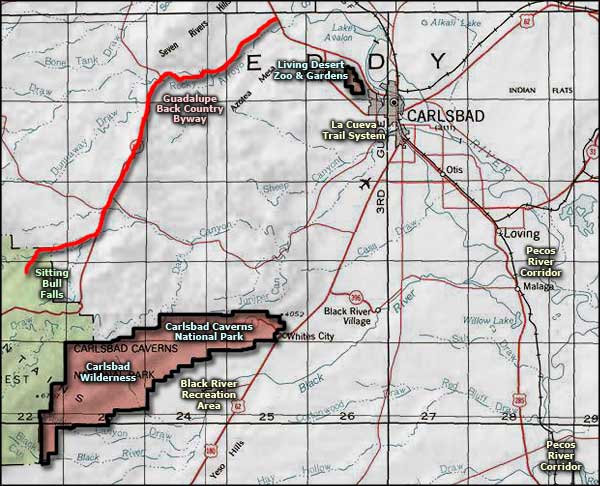Carlsbad Caverns National Park

At the entrance to Carlsbad Caverns
Carlsbad Caverns National Park is in southeastern New Mexico. Of the 300+ known caves in the area, 113 of them are included within the National Park. All of these caves were created by sulfuric acid dissolving the surrounding limestone, creating some of the largest caves in North America. Carlsbad Caverns National Park contains 46,427 acres, 33,125 of which are designated as Carlsbad Caverns Wilderness. Human traffic is heaviest in June, July and August, and lowest in January. The only time the park is closed is Christmas Day.
I've been to Carlsbad Caverns National Park a few times, each time entering the main Carlsbad Cavern through the main natural entrance. When I was a teenager, everything underground required the presence of a guide, but a big part of the cavern is self-guided now. The main natural entrance is a bit steep but the switchbacks in the path take most of the difficulty out of it. The path is smooth and easy (once you are actually inside the cave) and takes you pretty quickly into the Big Room: an 8.2 acre opening completely underground. Virtually everyone makes the self-guided tour around the Big Room. There's a cafeteria down there, too, with an elevator that takes you back to the surface (saving you the climb back up through that main natural entrance). You'll want to start out early because last entrance into the cavern is at 3:30 PM.

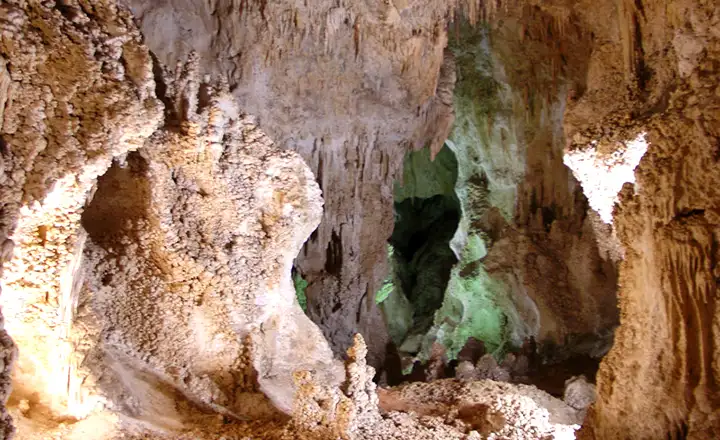
In the Big Room
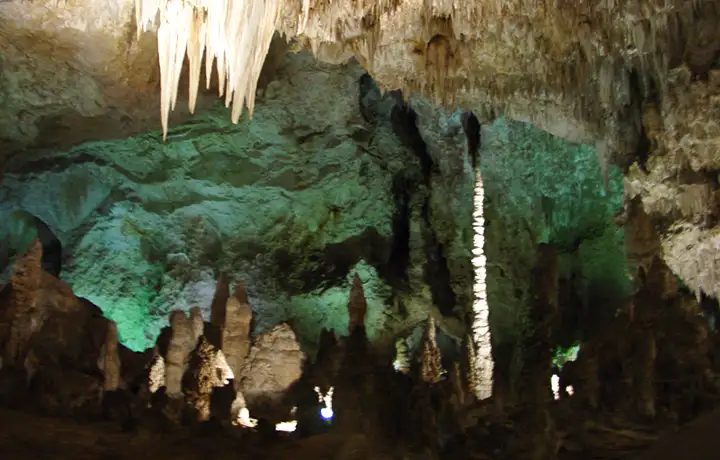
Also in the Big Room
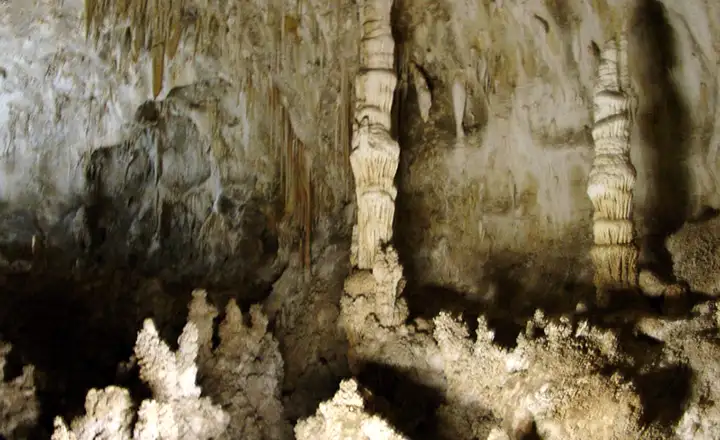
Limestone Columns
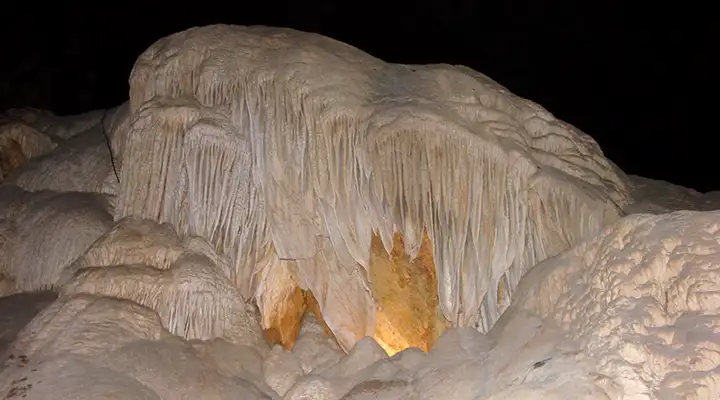
Flowstone
250 million years ago, the Guadalupe Mountains was a 400-mile long reef built up of the remains of algae, sponges and seashells beneath an inland sea. Over time, the sea receded and its remains evaporated away, leaving the reef buried under layers of gypsum and salts. A few million years ago, erosion and uplift had the reef approaching the surface again.
Carlsbad Cavern is in that place between the surface (where rainwater is seeping downwards) and the oil and gas deposits beneath the ancient reef (which are releasing hydrogen sulfide gas that is migrating upwards). Where the rainwater and the hydrogen sulfide meet, they form sulfuric acid which then helps in dissolving the limestone, and creating the large underground chambers. The other fantastic formations in the cave (the stalactites, stalagmites, helictites, columns, soda straws, draperies, dams, cave pearls, lily pads, etc.) were created over the last 500,000 years through the action of downward moving water carrying dissolved calcite into the cavern. On reaching that open space, the water evaporated and left behind tiny traces of that calcite. Over time, those tiny traces of mineral have built up into the formations we see today.
Carlsbad Cavern is also home to millions of Mexican freetail bats for a major part of the year. Every evening in spring, summer and fall, visitors can enjoy the spectacle of the nightly emergence of clouds of these bats as they head out after dusk to catch and eat moths and other night-flying insects in the Black and Pecos River valleys.
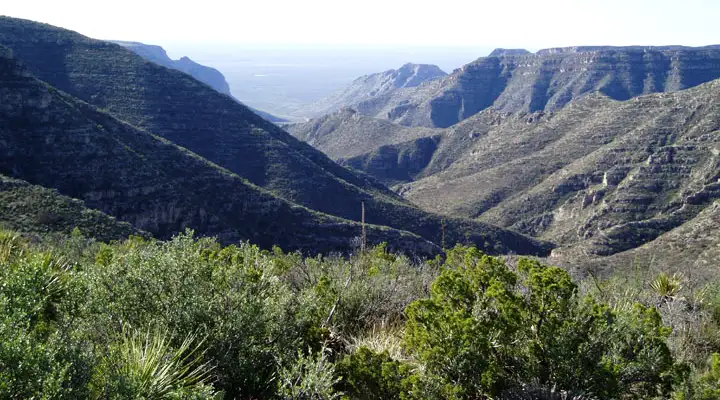
Carlsbad Caverns Wilderness is in the Guadalupe Mountains
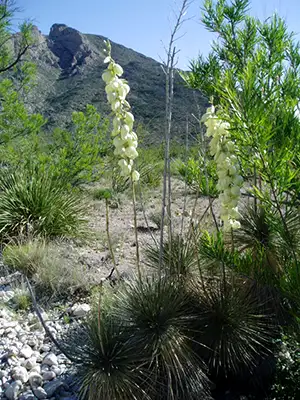
While Carlsbad Caverns is an incredible subterranean National Park, most the landscape above the caves, part of the designated Carlsbad Caverns Wilderness, is almost equally dramatic. With elevations ranging from 3,600' to 6,350' across the 33,125 acres, this is a countryside of craggy ridges rising above steep and rocky canyons.
Because of the location at the western edge of the Great Plains and the northern edge of the Chihuahuan Desert, Carlsbad Caverns Wilderness has incredible biodiversity: 950 species of plants, 67 species of mammals, 55 species of reptiles and 357 species of birds.
Carlsbad Caverns Wilderness covers almost 3/4 of the National Park area and bounds up against Lincoln National Forest to the west and northwest. Of the 43 miles of hiking trails in the park, some 25 miles are in the Wilderness. Any caves found within the Wilderness are managed as part of the Wilderness.
This is a water-challenged area so whatever you want to do out here, bring your own water. Summers are hot and dry. Winters are pretty mild but the tops of the Guadalupes often carry snow. And spring can be incredibly windy.
Photos of Carlsbad Wilderness courtesy of Renee West, via Wilderness.net
